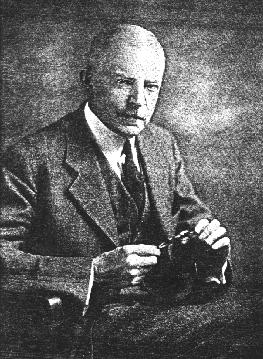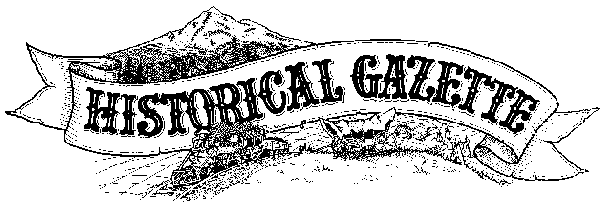August to December 1900
Excerpted from USGS Reports
The Gold Belt of the Blue Mountains
of Oregon
by Waldemar Lindgren
Lower Burnt River and Rye Valley
--Placer Deposits--

A number of gulches in the vicinity of Durkee and Weatherby have been worked in early days, and some are not yet exhausted.
A few miles northeast of Durkee is Parker Basin, with some placer mines; 5 miles southward, below the Gold Ridge mine, are the Raven placers, in Shirttail Creek, which are said to afford promising ground if water could be brought to them. Most celebrated, however, are the diggings of Sisley Creek and Chicken Creek. The former is a tributary of Burnt River entering near Weatherby and heading a short distance south of Lookout Mountain, Rich placers, now mostly worked out, were found at its mouth, and more of less work has been done for a distance of 7 miles, up to Chichen Creek, a tributary joining Sisley Creek from the east. The Chicken Creek placers have been mined for many years, producing from $8,000 to $24,000 annually, and are not yet exhausted. The creek is said to carry pay up to the divide, and even across the latter on the Snake River slope some pay is found.
The gravel bed of Burnt River is more of less auriferous all along from Bridgeport down to the mouth, and the low bars have been worked with some success, both in the upper canyon and below Durkee. The gravels in the river bed itself are also auriferous, but in the upper canyon heavy bowlders interfere with successful work. Between Durkee and the mouth of the lower canyon good dredging ground is said to exist, though the gravels are probably not of high grade. At Weatherby, wheree the canyon widens to a bottom 700 feet wide, just below the mouth of Sisley Creek, placer work is done by the Pomeroy Dredging Company , of Portland. The area available is about 160 acres. The maximum depth of the gravel is up to 35 feet. Prospecting shafts indicated a yield of from 17 to 25 cents per cubic yard, of fairly coarse gold, most of it contained next to the bed rock. The dredge is of the ladder-and-bucket chain type, 100 feet long and 33 feet wide. The ladder is 76 feet long and carries 35 buckets, each holding 5 cubic feet. Actual capacity is about 1,500 cubic yards per twenty-four hours. After passing through a 15- by 4-foot trommel, which eliminates cobbles over 4 inches in diameter, the gravel passes through a suspended sluice 140 feet long, 3 feet wide, and 2 feet deep, containing wooden riffles shod with sheet iron, and having a grade of 9 inches per 12 feet. The operating necessitates 6 tons of coal a day, at $6 per ton; 10 men are employed, and the total expenses are about $70 per day, or a cost of 5 to 7 cents per cubic yard. The cost of the whole plant, including prospecting operations, was $68,000.
At the mouth of Dixie Creek the gravels of the river bed have also been prospected with a view to dredging, the they are said to be less rich here than above, and the gold is finer in size.
All along Burnt River, from Huntington up to Gold Hill, small bars are found 50 feet above the present bed; all of these have been worked and are practically exhausted. Corresponding to this former stage of rhe river are gravel terraces, 50 feet high, near Durkee, extending up to the mouth of the upper canyon.
Near Weatherby small gravel bars are also found as high as 200 feet above the river.
These stories are available to our electronic readers as part of our contribution to the information available on the Internet. We're interested in hearing from you especially if you've been to Eastern Oregon, the Wallowas, the Blues, or if you know of Prof. Lindgren and his trips to the many other gold camps in the West. These stories are available to our electronic readers as part of our contribution to the information available on the Internet. We hope you enjoy the stories and if you have questions or comments please send a message to editor, Keith Whittle
More on Waldemar Lindgren:
[Editor's Introduction | "Gold Belt of Eastern Oregon"]Read our other gold mining editions:
[Sumpter, Oregon 1900 | Gold Seekers Rush to California]
[ Oregon: Land of Gold & Opportunity | Dequille Reports from the Comstock]

Bridget E. Smith, editor & publisher
Email | Home Page | Historic Headlines
Historical Gazette
Published in Portland, Oregon
© 1991-

